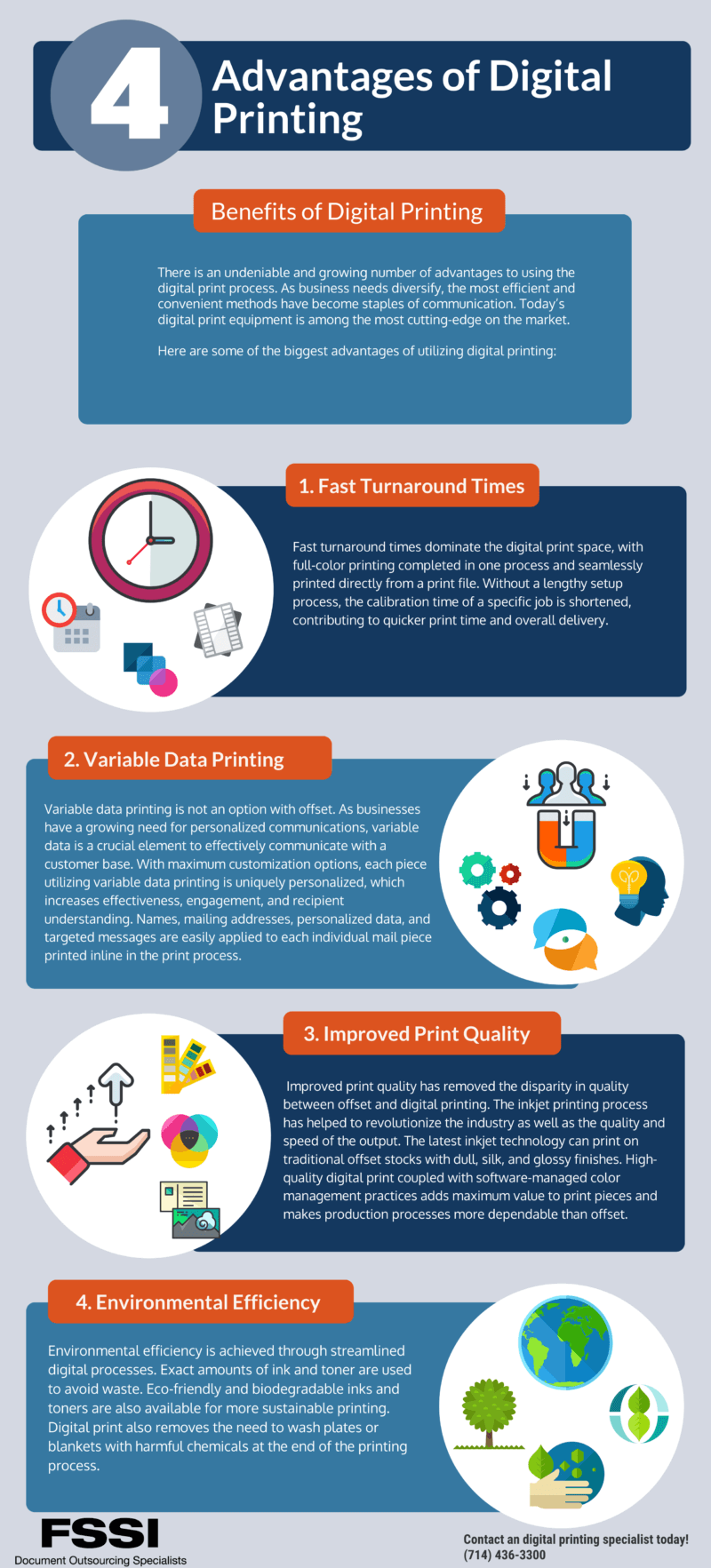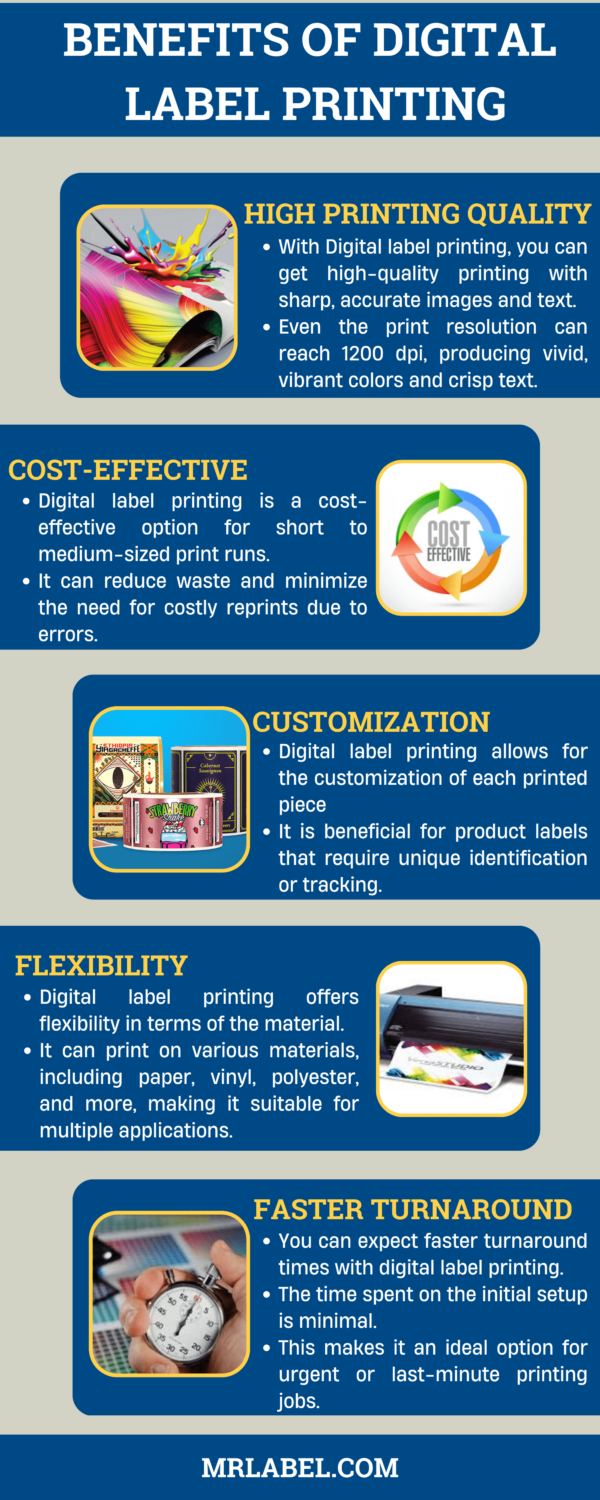Excitement About Digital Printing
Excitement About Digital Printing
Blog Article
Rumored Buzz on Digital Printing
Table of ContentsSome Known Details About Digital Printing The Only Guide to Digital PrintingThe 6-Second Trick For Digital PrintingDigital Printing Things To Know Before You BuyThe Basic Principles Of Digital Printing The Greatest Guide To Digital Printing
Variable data printing, such as direct mail with customized codes and addresses, is ideally fit for digital printing. Digital quick printing only requires 4 steps of design, review, printing and binding to get everything done. Digital fast printing has an unrivaled advantage: print on need.According to PMMI, digital printing permits brand names and manufacturers to respond quickly to client demands while boosting the supply chain, minimizing warehousing price and waste, and appreciating faster time to market. That all sounds great, yet how does this innovation do all that? The major differentiator of these innovations is that there are no set up charges and no plates with digital printing.
The Of Digital Printing
According to Wikipedia, the best distinction between electronic printing and traditional methods such as lithography, flexography, gravure, or letterpress - Digital Printing is that there is no need to replace printing plates in digital printing, whereas in these analog printing techniques the plates are consistently replaced. This leads to quicker turn-around time and decreases cost when using electronic printing.
Digital printing is very flexible, so it's simple to make adjustments to the bundle design swiftly. It all goes back to the plates.
More inventory can mean even more waste in the future. With conventional printing approaches, short-run printing is simply not possible. Because a wonderful style can make or break your item, electronic printing regularly produces high-grade, clear and vivid graphics each time. Digital printing on adaptable pouches includes the bright, dynamic, and accurate graphics that almost bid consumers to connect and touch them.
Digital printing is the procedure of printing digital-based images straight onto a range of media substrates. There is no need for a printing plate, unlike with countered printing. Digital data such as PDFs or desktop posting documents can be sent straight to the electronic printing press to print on paper, image paper, canvas, fabric, synthetics, cardstock and other substrates.
A Biased View of Digital Printing
According to PMMI, digital printing permits brands and manufacturers to react promptly to customer needs while enhancing the supply chain, lowering warehousing cost and waste, and delighting in faster time to market. That all audios great, yet exactly how does this innovation do all that? The major differentiator of these modern technologies is that there are no set-up charges and no plates with electronic printing.
This results in quicker turnaround time and Visit Website decreases cost when utilizing digital printing.

The Of Digital Printing
With conventional printing techniques, short-run printing is just not feasible. Due to the fact that an excellent design can make or break your product, digital printing regularly develops high-grade, clear and colorful graphics each time.

According to PMMI, digital printing permits brands and makers to respond promptly to client needs while enhancing the supply chain, minimizing warehousing price and waste, and taking pleasure in faster time to market. That all sounds fantastic, yet exactly how does this innovation do all that? The significant differentiator of these modern the original source technologies is that there are no set-up costs and no plates with electronic printing.
The 2-Minute Rule for Digital Printing
This results in quicker turnaround time and lowers cost when using digital printing.
Digital printing is highly flexible, so it's easy to make changes to the bundle style rapidly. It all goes back to the plates.

Digital Printing - The Facts
Digital printing is the process of printing digital-based pictures straight onto a variety of media substratums. There is no demand for a printing plate, unlike with offset printing. Digital data such as PDFs or desktop publishing documents can be sent out directly to the electronic printing press to print on paper, picture paper, canvas, material, synthetics, cardstock and various other substrates.
Report this page